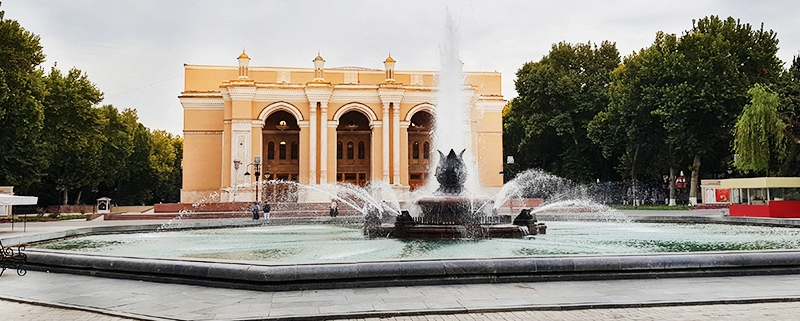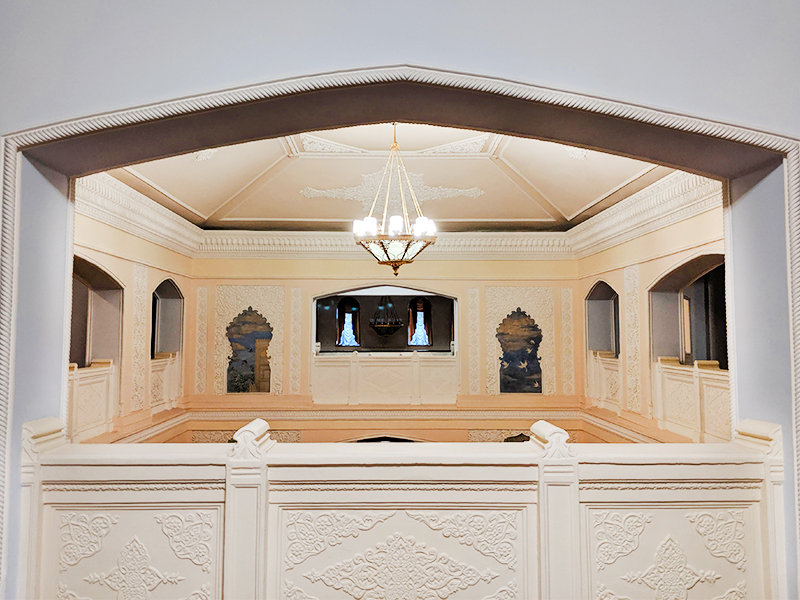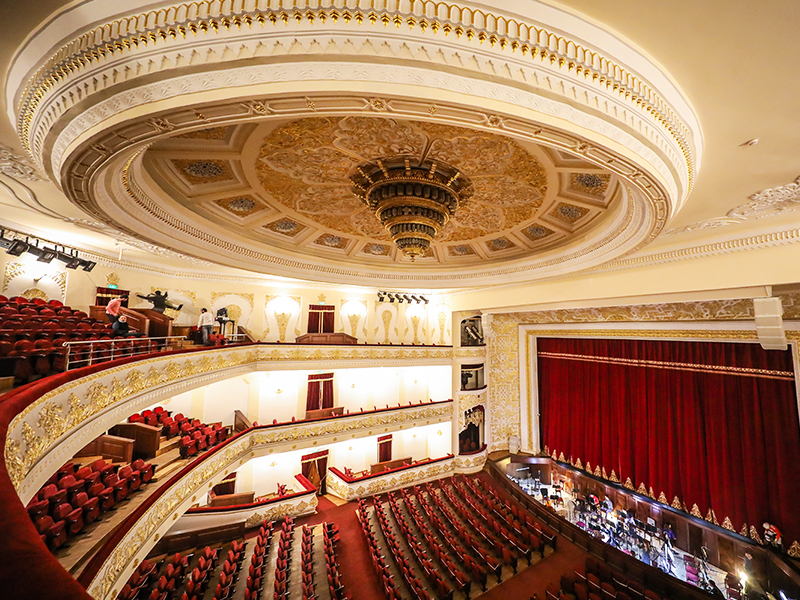Alisher Navoiy Theater: Tickets, History, Architecture
The Alisher Navoiy Theater is the national opera house in Tashkent, Uzbekistan. This building is one of the most beautiful structures in Tashkent city, which attracts many tourists every year. During the period of independence, this theater established extensive cooperation with Italy, Germany, Russia, Bulgaria, Azerbaijan, and other countries. Today, 560 people are working in this theater.
Alisher Navoiy Theater Hall is considered a center of art development in Uzbekistan and the introduction of achievements of other countries of the world in this field of art. Personalities such as “Mohiuddin Qari Yaqoub”, “Mukhtar Ashrafi “, “Karim Zakraf” and others are among the founders of this theater.
History of Alisher Navoiy
Alisher, nicknamed “Navoiy” and “Fani” was a minister, poet, and writer during the period of Sultan Husayn Bayqara (of the Timurid period sultans).
Alisher was born in Herat in 844 AD. For some time, he was in the service of Abul Qasim Babur Mirza along with his father, and he lives in Mashhad. As a child, he and Sultan Husayn Bayqara studied in the same school and made a pact that each would not forget the other when he became king.
After the death of Abul Qasim Babur, Sultan Husayn Bayqara, who was also in the service of Abul Qasim Babur, went to Merv, and there was a separation between him and Amir Alisher for twelve years.
Amir Alisher spent some time in Herat in the service of Abu Sa’id Mirza after his father’s death in 861 AH. After the death of Abu Sa’id Mirza, Sultan Husayn Bayqara sat on the throne in Herat and called Alisher to him, and at first, entrusted him with the position of “Mehrdari” of the Sultanate. He called him “Emir” and then appointed him to his ministry.
Reason For the Fame & Popularity of Alisher Navoiy
Amir Alisher writes poetry in both Turkish and Persian languages. For this reason, he was nicknamed “Dhu al-Lassanin”. In Persian poetry, he used the surname “Fani”. His Persian divan has nearly 6 thousand verses. His surname in Turkish poetry was “Navai”, and he composed more than 60,000 verses in this language.
He considered himself a student of “Maulana Abdurrahman Jami” and attended his meetings. Jami wrote some of his works, such as “Nafhat al-Alans and Ish’a al-Lamaat” in his name.
Amir Alisher was a humble and well-behaved man. He was in constant association with poets and people of literature and art and exaggerated their education and encouragement. He was a lover of art, and artists, painters, calligraphers, and musicians had high status and respect for him; for this reason, it had a great impact on the flourishing of literature and art during the reign of Sultan Husayn Bayqara.
Sultan’s cooperation with him in this way made Herat one of the largest centers of literature and art in the history of Iran at the end of the 9th century and the beginning of the 10th century.
History of Alisher Navoiy Theater
The construction work of this theater started in 1939, based on the design of the academician and architect “Alexey Shchusev”. However, the construction stopped in 1942 due to the World War, but it resumed in 1944.
The final stage of construction of this theater involved Japanese prisoners of war from the Kwantung Army who had been deported to Tashkent in November 1945. Theater operations began in 1948.
After construction was completed, Alexey Shchusev, the architect of the theater building, suggested installing a fountain in front of the building. In 2010, this fountain was renovated, and lights and music were added. Colorful music fountain attracts the attention of citizens and guests of Tashkent city.
Architecture of Alisher Navoiy Theater
In the decorative works of this building, the national painters of Uzbekistan, including “Master Shirin Moradaf”, “A. Khudibargan F., “Kh. Balteyev” and other artists were present.
Alisher Navoiy Theater has several separate and different halls. According to the architect’s plan, each hall, including the Tashkent Hall, Khwarazm Hall, Bukhara Hall, Samarkand Hall, Fergana Hall, and Termez Hall, has its own style, which reflects the architectural features of the provinces of Uzbekistan.
The hall of Bukhara is interesting in that it is covered with plaster on the base of the engraved glass. On the walls of the Samarkand hall, two-layer “Arabesque” engraving is used. The Khwarazm hall is decorated with plaster patterns that replicate wood carvings.
Termez Hall is decorated in the style of the palace of the ruler of Termez. Halls and the lobby theater with wall paintings by Uzbek painters such as “Genghis Khan “, “A. Tativasyan” and others decorated.
Renovation of Alisher Navoiy Theater
The restoration works of the theater started in 2012 and ended in 2015. The opening ceremony of this theater was held after the completion of the restoration work during the visit of Japanese Prime Minister Shinzo Abe to Uzbekistan on October 26, 2015 (November 4, 2015).
Buy Tickets for Alisher Navoiy Theater
You can buy tickets at the Kassa in front of the Opera, which is open until 6 pm. Performances usually start at 6 o’clock. Tickets can be booked online through the theater website.
Prices range from 15,000 to 30,000 sum for a basic seat. If the hall is not full, you can buy a cheap ticket and move to a better seat after the show. In general, Alisher Theater tickets are very cheap and affordable.
Concerts in Tashkent
In addition to Alisher Navoiy Theater, other halls and centers also hold concerts and operate in Tashkent. Among the most famous theaters and performance halls of Tashkent, the following can be mentioned:
National Symphony Orchestra of Uzbekistan
Spettacolo Folkloristico El Merosi
Ilkhom Theater
An Unforgettable Visit!
Alisher Nava’i Theater is a very good choice for art and culture lovers, with a very peaceful and friendly environment, various halls, and diverse performances. If you travel to Tashkent, don’t forget to visit this theater and watch unique performances.
Check out our Uzbekistan tour and contact us to plan your trip. Here are more interesting things to do in Tashkent.








Leave a Reply
Want to join the discussion?Feel free to contribute!